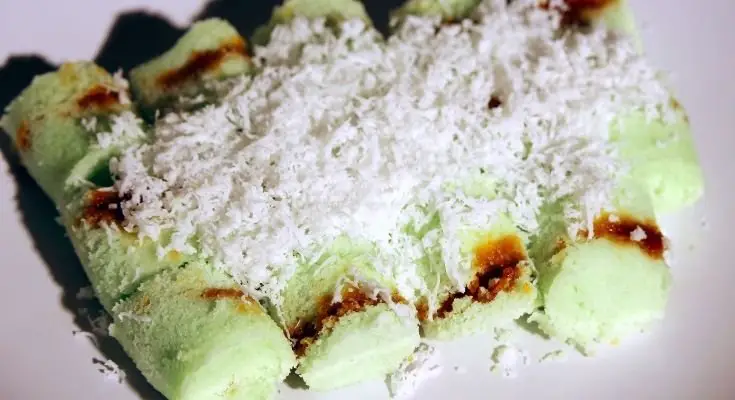If you have ever traveled to South Asia, you might have come across a delightful and scrumptious snack called “Putu Cake.” Putu cake, also known as Puttu or Puttumayam, is a traditional South Asian delicacy that is made with rice flour and coconut.

The Origins of Putu Cake
Putu cake has its roots in South India and Sri Lanka, where it is a popular breakfast dish. The word “putu” in Tamil and Malayalam means “portioned” or “divided,” which refers to the unique shape of this delicacy. It is believed that putu cake was first introduced in the Chola dynasty in South India and then spread to Sri Lanka.
Cultural Significance of Putu Cake
In South India and Sri Lanka, putu cake is an integral part of their cuisine and is often served during festive occasions and ceremonies. It is also a popular street food and is sold in small carts along with other snacks. Putu cake is considered a symbol of prosperity and is often offered to deities during religious ceremonies.
Traditional Preparation of Putu Cake
The traditional preparation of putu cake involves steaming rice flour and grated coconut in cylindrical bamboo or metal tubes. The rice flour and grated coconut are layered alternatively in the tube, and then the tube is placed in a steamer for a few minutes. The steam causes the mixture to expand and cook, resulting in a cylindrical-shaped putu cake.
Variations of Putu Cake
Putu cake is a versatile dish that can be prepared in various ways depending on the region and preference. In South India, putu cake is often served with sweetened coconut milk or jaggery syrup, while in Sri Lanka, it is paired with savory curries or spicy sambols. In some parts of South India, putu cake is also made with ragi flour instead of rice flour, giving it a unique taste and texture.
The Popularity of Putu Cake Today
In recent years, putu cake has gained popularity not just in South Asia but also in other parts of the world. With the rise of social media and food blogging, putu cake has become a trendy food item, and people are experimenting with new flavors and presentations. Many restaurants and cafes have also included putu cake in their menu, catering to the demand of food enthusiasts.
FAQs
Putu cake is made of rice flour and grated coconut, which are steamed in cylindrical tubes.
Putu cake originated in South India and Sri Lanka.
Putu cake is considered a symbol of prosperity and is often offered to deities during religious ceremonies.
Putu cake can be prepared with ragi flour instead of rice flour, and it can be served with sweetened coconut milk or savory curries.
Conclusion
Putu cake is more than just a delicious snack. It is a symbol of cultural heritage and traditions that have been passed down for generations. The history of putu cake is intertwined with the history of South Asia, and it continues to be an integral part of their cuisine. Whether you prefer it sweet or savory, putu cake is a must-try dish that will leave you craving for more.
